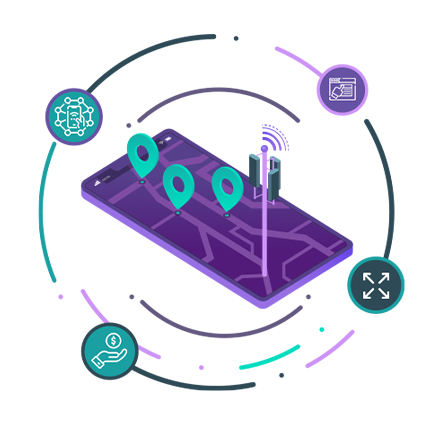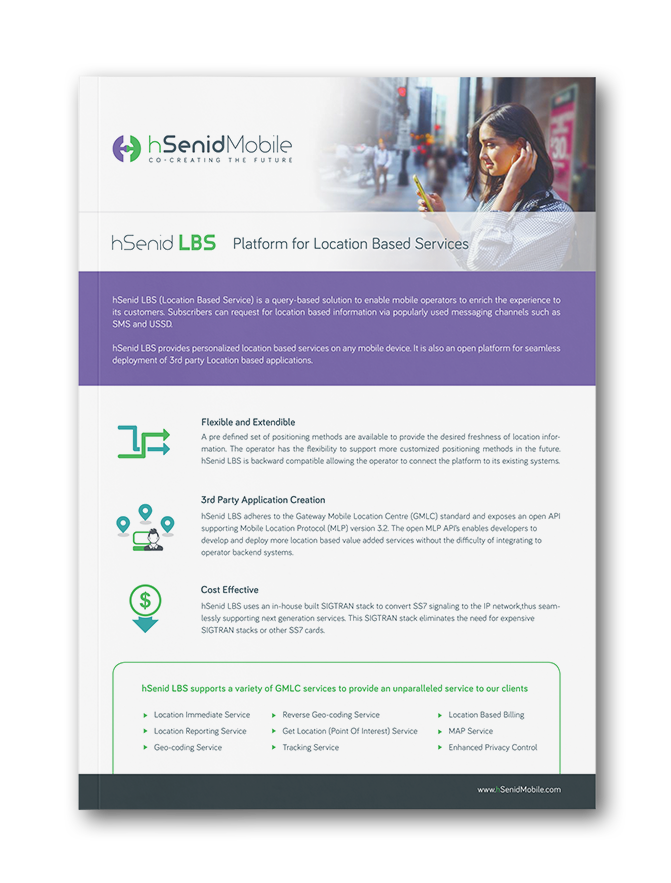In an increasingly connected world, Location-Based Services data has become a
critical asset for the telecom industry. As smartphones and IoT devices
proliferate, telecom companies are leveraging LBS data to enhance customer
experiences, improve operational efficiency, and unlock new revenue streams.
By utilizing geospatial insights, telecom providers can better understand
customer behavior, optimize network performance, and deliver targeted
services. This blog explores the significance of Location Based Service data,
its transformative role in telecom, and the potential it holds for the future.
Additionally, the processing and analysis of large volumes of data require advanced analytics tools and infrastructure. Telecom providers must invest in AI-driven solutions to extract actionable insights from raw data while ensuring scalability as data volumes grow. The possibility of inaccurate location information is another difficulty. Inaccurate data can occasionally be produced by variations in GPS signals, network coverage, and device configurations, which could have a detrimental effect on user experience or service quality. Careful planning and constant technology advancements are needed to meet these problems.
For instance, integrating data with augmented reality (AR) could revolutionize customer engagement, offering location-specific AR experiences for users. Similarly, the rise of smart cities will rely heavily on location-based data to optimize traffic flow, energy consumption, and public services.
Telcos can take advantage of hSenid Location-based Services by merging with enterprises and third party developers to offer subscribers more relevant, accurate and useful information on real-time location.
Key Applications of Location Based Services Data in Telecom
- Network Optimization:One of the primary uses of location-based insights is optimizing network performance. By analyzing the locations where users experience high data usage or network congestion, telecom providers can identify bottlenecks and deploy resources more effectively. For example, if a specific area experiences frequent call drops, providers can install additional towers or enhance existing infrastructure to improve service quality.
- Location-Based Marketing:Telecom operators can use it to offer targeted marketing campaigns based on a user’s location. For instance, a customer passing through a shopping mall could receive promotional offers for nearby stores or restaurants. These hyper-personalized campaigns not only improve customer satisfaction but also increase revenue for both telecom operators and partnered businesses.
- Emergency Services and Disaster Management:It plays a crucial role in emergency response. Telecom operators can assist authorities in locating individuals during disasters or emergencies, providing life-saving information. This technology has been instrumental in coordinating rescue operations and sending location-specific alerts to affected populations, such as evacuation orders or weather warnings.
- Enhancing Customer Experience:Telecom providers can improve the customer experience by leveraging LBS data to offer services based on user preferences. For instance, users traveling internationally can receive notifications about roaming plans or recommendations for data packages specific to their location. This proactive approach not only enhances customer satisfaction but also builds brand loyalty.
The Benefits of Location Based Services Data for Telecom Providers
- Improved Resource Allocation:By analyzing location trends, telecom operators can allocate resources more efficiently. For instance, during large-scale events like concerts or sports games, location-based insights can predict where network demand will peak, enabling providers to deploy mobile network units or strengthen existing infrastructure in advance.
- Enhanced Revenue Streams:The monetization of location-based insights opens up new revenue streams for telecom providers. By partnering with businesses in industries like retail, hospitality, and transportation, operators can offer location-driven insights to enhance customer targeting. These partnerships create a win-win scenario, where businesses gain valuable insights, and telecom companies benefit financially.
- Regulatory Compliance and Privacy Protection:While the benefits of location-based insights are significant, telecom providers must prioritize data privacy and regulatory compliance. Implementing robust data security measures and ensuring transparency about how location data is collected and used are critical to maintaining customer trust. Telecom companies must comply with regional and global regulations such as GDPR or CCPA, which emphasize user consent and data protection.
Challenges of Leveraging Location Based Service Data
Despite its advantages, integrating LBS data comes with challenges. One of the primary concerns is maintaining the balance between offering personalized services and protecting user privacy. Customers are increasingly wary of sharing their location data, especially when they feel it is being used without their consent.Additionally, the processing and analysis of large volumes of data require advanced analytics tools and infrastructure. Telecom providers must invest in AI-driven solutions to extract actionable insights from raw data while ensuring scalability as data volumes grow. The possibility of inaccurate location information is another difficulty. Inaccurate data can occasionally be produced by variations in GPS signals, network coverage, and device configurations, which could have a detrimental effect on user experience or service quality. Careful planning and constant technology advancements are needed to meet these problems.
Future Prospects for LBS Data in Telecom
As 5G, IoT, and edge computing technologies advance, Location Based Service data’s significance in telecom will only increase. Telecom companies will have real-time access to even more accurate location data thanks to quicker networks and better connection, which will allow for creative applications.For instance, integrating data with augmented reality (AR) could revolutionize customer engagement, offering location-specific AR experiences for users. Similarly, the rise of smart cities will rely heavily on location-based data to optimize traffic flow, energy consumption, and public services.
In Conclusion
Location Based Service data has become a game-changer for the telecom industry, enabling providers to enhance services, optimize networks, and create personalized experiences for their customers. While challenges like data privacy and scalability remain, the potential benefits far outweigh the drawbacks. As telecom companies continue to innovate and harness the power of LBS data, they will not only improve operational efficiency but also redefine how businesses and customers interact in an increasingly connected world.Telcos can take advantage of hSenid Location-based Services by merging with enterprises and third party developers to offer subscribers more relevant, accurate and useful information on real-time location.








